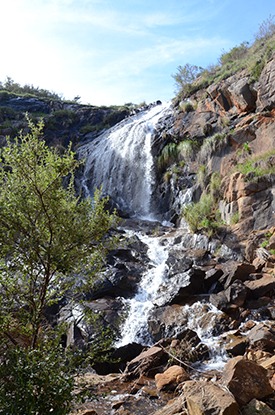
Integrated Catchment Management (ICM) occurs when a holistic and stakeholder inclusive approach is used when managing a waterway's catchment. ICM was introduced as state policy in 1988 in an attempt to overcome land and water degradation in Western Australia (WA). During this time, many ICM groups were set up and funded to assist state, local government and community groups to develop ICM plans to improve water quality and biodiversity.
Julie has first-hand experience in this field having set up and worked within a number of ICM groups. Bannister Creek Catchment Group being the first with the Canning Plain Catchment Management Group and later the Two Rivers Catchment Group. Julie is highly experienced in the process of "integration of organisations" for better delivery of sustainable outcomes. She believes that face to face planning with good leadership and coordination is the key to positive action on the ground.
Julie is determined to remove plans from shelves and only create them for active on ground delivery. Her strong vision and belief in ICM with a results focus, provides opportunities for environmental managers to benefit from her advice, experience and teaching.
Catchment Water Quality Planning and Assessment
Catchment management planning often results in the need to investigate the catchment for baseline environmental data associated with water quality. If the data is not already available then a water quality sampling plan should be developed. Julie has significant experience in the development of such programs.
Julie maintains that many catchments are monitored for water quality but the land managers are not able to respond to the monitoring results due to a lack of experience in understanding what can be done to improve water quality. Often the solutions are simple and not expensive, but they can be well hidden and it can take someone with a lot of experience to locate where some contaminants may be coming from. Julie has that experience and a long standing network of colleagues who operate in this sector in Western Australia.
Julie also has significant experience in the review of water quality reports, investigation re results and provision of recommendations for remediation, environmental health reporting or installation of ecological solutions.
Retrofitting Wetlands and Stormwater Management Basins
Wetlands and Stormwater basins are commonly used in urban areas to manage urban stormwater run-off. While many wetlands may need this water to function, the quality, quantity and frequency of that water supply is not always suitable to the wetland's needs. Often the wetland vegetation has also been significantly compromised by weeds, dumping of waste, sedimentation, mechanical operations and human use impacts.
However, Julie says that many of the wetlands and stormwater basins retain significant local plant species and they can be restored and retrofitted to function ecologically while still performing their stormwater management role.
Julie has designed and implemented such retrofits including natural bio-retention systems, flash flow management systems, erosion protection, rock and woody riffle systems and simple stormwater basin remediation for improving human use, experience and safety.
Water Sensitive Urban Design (WSUD)
Water Sensitive Urban Design is used to describe a new Australian approach to urban planning and design for contemporary stormwater management, the terminology first used in Perth to describe this approach (Whelans et al, 1994; Wackernagel and Rees,. 1996; Beecham, 2003; Mouritz et al, 2003).
WSUD fits very nicely within ICM as an essential stormwater design tool within new developments as well as within "brownfield developments" (old urban areas being redeveloped both residential, commercial and industrial).
Julie says, the theory of WSUD is relatively simple and highly researched.
"The concept of Water Sensitive Urban Design (WSUD) is based on formulating development plans that incorporate multiple stormwater management objectives and involve a pro-active process which recognises the opportunities for urban design, landscape architecture and stormwater management infrastructure to be intrinsically linked. WSUD is the integration of urban planning and utilisation of best practices to achieve the objectives of sustainable drainage systems for urban areas." (Et al T Wong. Improving Urban Stormwater Quality – From Theory to Implementation).
Julie has a high level of WSUD understanding and fully supports the theory, however, she is very aware that the application of WSUD on ground sometimes gets misunderstood and misinterpreted thus the expected results can become skewed. She is available to help with your development projects associated with managing stormwater using the WSUD approach, whether it is with stormwater waterways, detention basins, wetlands or streetscapes.